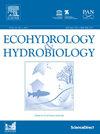The anthropogenic threat for insular microcrustacean fauna (Copepoda and Cladocera) – the case of Madeira Island
Abstract
Substantial loss of biodiversity and the proliferation of invasive alien species can occur due to land cover anthropogenic transformations on islands. However, the effect of anthropogenic habitat modifications on the distribution of insular freshwater microcrustaceans is unknown. In the present paper, we examine the consequences of human activity on the insular diversity of microcrustaceans in the context of the theories of island biogeography and intermediate disturbances. The samples were collected in Madeira Island at 38 freshwater sampling sites with different anthropopressure. Morphology-based species identification of the copepods and cladocerans was supplemented with genetic analysis (COI) in some species. To estimate the species richness of the island, rarefaction, and extrapolation methods were used. Canonical Correspondence Analysis (CCA) was applied to assess the influence of geospatial and environmental variables on the species distribution. A total of 20 species belonging to six families were identified, of which 16 species are new to Madeira. There was low similarity between the fauna recorded and known previously on the island. The observed species richness was higher than the predictions by the island biogeography models for Madeira. CCA revealed a strong influence of anthropogenic land use on crustaceans. Anthropogenic transformations locally led to the depletion of fauna, but on the island scale they contributed to the increase of species richness including seven putative alien species. An increase in the artificial land cover and a decrease in the forest areas could lead to a further shift in the domination of non-indigenous microcrustaceans.

 求助内容:
求助内容: 应助结果提醒方式:
应助结果提醒方式:


